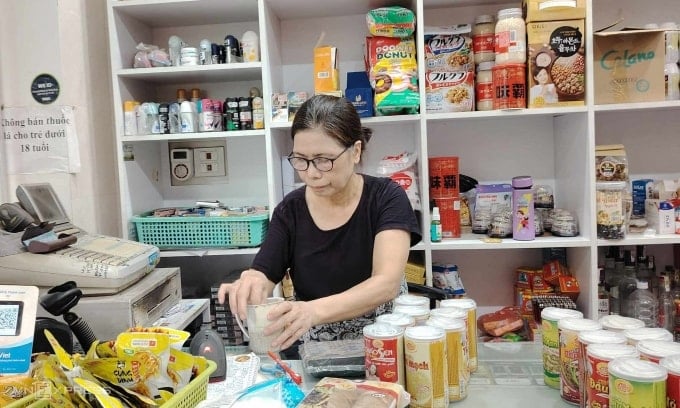
Previously, Ms. Duyen’s restaurant paid lump-sum tax and used raw materials from familiar sources without invoices. However, from June 1, when the new policy took effect, households and individuals with annual revenue of VND1 billion or more must switch to declaring taxes based on actual revenue. This forced her to find suppliers with full documentation, leading to a significant increase in input costs.
She also had to use electronic invoices issued from the cash register, which were directly connected to the tax authorities. "I was forced to increase the price, from 40,000 - 60,000 VND to 45,000 - 65,000 VND per bowl of noodles," she said, adding that she was updating to "remake the menu with new prices."
Not only Ms. Duyen's restaurant, many shops and restaurants around Tay Mo area have increased prices by 5,000 - 10,000 VND per dish to cover costs.
According to regulations, sellers must pay VAT and personal income tax if they have revenue of 100 million VND or more per year. The tax amount is calculated by the management agency based on total revenue, VAT rate of goods, services and personal income, for each business activity.
For example, if an individual distributes or supplies goods, the tax payable = revenue * (1% VAT + 0.5% personal income). If an individual has income from advertising on digital information content products and services..., he/she must pay personal income tax at a rate of 2% and VAT at 5%.
Ms. Nguyen Thi Xuan, 63 years old, owner of a grocery store on Tran Cung Street (Cau Giay District, Hanoi) said that with a tax rate of 1.5% on revenue, while the profit is only 2-5%, the store has almost no profit left. This forced her to calculate and adjust the prices of some items.
Not only bearing the tax costs, business households must invest in equipment and software to issue invoices for each transaction and connect with tax authorities. Ms. Xuan spent 6 million VND to buy a machine and software to print invoices, but she had difficulty operating them due to her old age and lack of technology knowledge.
At Dong Xuan Market (Hanoi), many traders have not yet implemented electronic invoices due to time constraints. Ms. Hoa - a shoe stall owner - said she had to ask her family to help her enter the product code into the machine and issue invoices because she had always been used to writing by hand.
Ms. Ngan, another shop owner, worries that her business is even harder because she has to pay taxes before collecting money from her debtors. "Business is slow, revenue is down, now we have to raise prices because taxes are slowing down sales," she said.
According to the General Statistics Office ( Ministry of Finance ), by the end of 2024, the country will have 3.6 million business households under tax management, contributing VND 25,953 billion to the budget. Of these, nearly two million households will apply the lump-sum tax method, averaging VND 700,000 per month. It is expected that about 37,000 business households and individuals currently paying taxes in the lump-sum form will have to change their form.
In Ho Chi Minh City , many small traders at An Dong market also had difficulty switching to electronic invoices because they were not familiar with using technology devices. Ms. Thanh, who sells shoes on the ground floor, shared that she did not know how to use a phone or a computer, so "updating products and printing invoices all had to rely on her children and grandchildren."
Similar situations occurred at Ben Thanh, Tan Dinh, and Pham Van Hai markets. Many traders said they were instructed by the tax authorities but were still confused and did not dare to issue invoices. Some individuals tried to do so, but the software had errors and buyers did not receive documents.
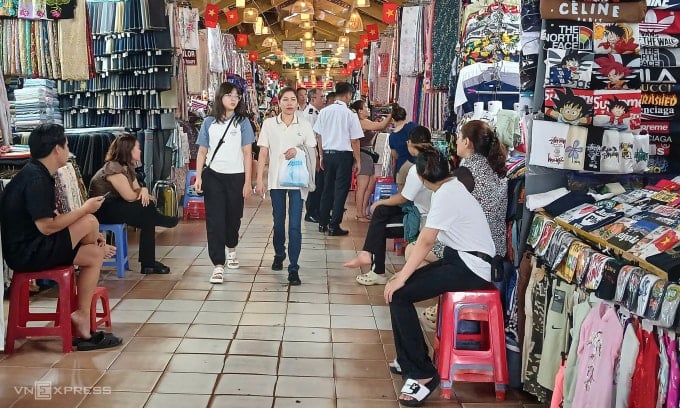
A representative of Ben Thanh Market Management Board said that the implementation of electronic invoices has encountered many difficulties because most of the traders are elderly and have little access to technology. In addition, the cost of purchasing cash registers, digital signatures, and software can be up to tens of millions of VND per year... which is also a burden for small businesses.
Ben Thanh Market currently has about 1,200 stalls, of which 80% are operating regularly. About 600 households with annual revenue of over 1 billion VND are being guided to issue and print invoices, but more than 10% are still unable to apply due to technical and legal problems.
"We are supporting within our capacity, but the elderly need more time and specific instructions," said a representative of the Management Board, and at the same time recommended that the tax authority be more flexible and reduce equipment costs so that small businesses can apply with peace of mind.
Mr. Do Tuan Anh, Deputy General Director of KiotViet, also said that investment and maintenance costs are major barriers for business households when eliminating lump-sum taxes and converting tax and invoice calculation methods. He suggested that invoice software should be simple, easy to use, and suitable for the elderly.
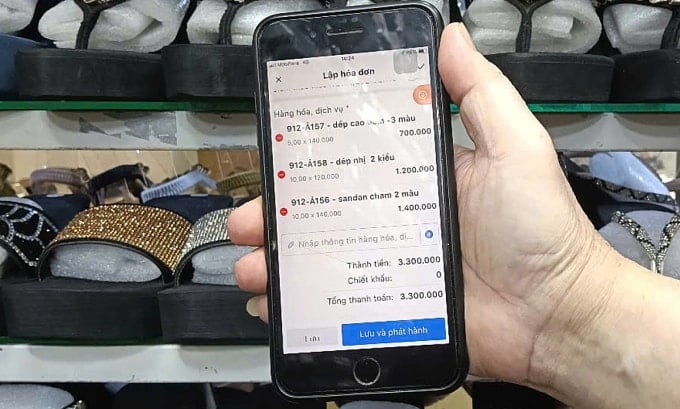
Under the new regulations, businesses are required to issue electronic invoices, in which the tax portion must be clearly stated. This has led to changes in the way prices are listed and calculated, even though many businesses are not subject to tax declaration under the deduction method. In this case, VAT is included in the selling price and is not separated.
Some restaurants have started adding VAT to their bills, instead of only charging it when customers request a "red invoice" as before.
Mr. Lam - owner of two claypot rice restaurants in District 1, said that in addition to technological difficulties, the major problem lies in the method of calculating direct tax at a fixed rate of 1.5-4.5% of revenue (depending on the industry). Unlike the deduction method, this method does not allow for input tax offset, leading to "tax on tax".
For example, he said, goods sold for VND100,000 are taxed an additional VND4,500. The buyer then resells the goods for VND200,000, and they are taxed again, pushing the price up to VND209,000. "Every step is taxed, instead of just collecting on the added value," he said.
A trader specializing in importing goods at Dong Xuan Market (Hanoi) said that taxes should be divided according to the industry or specific product. She cited that wholesale profits are very low due to the fast turnover of capital, but are taxed at the same level as retail - where the profit margin can be up to 200%. Or fresh food products, if not consumed within the day, will spoil, and cannot be compared to luxury goods that can be stored for months.
According to her, if the tax calculation is not suitable for each type, consumers will ultimately suffer because retailers have to add costs to the selling price to ensure profit.
VN (according to VnExpress)Source: https://baohaiduong.vn/ho-kinh-doanh-lo-hang-tang-gia-mat-khach-khi-bo-thue-khoan-413247.html


















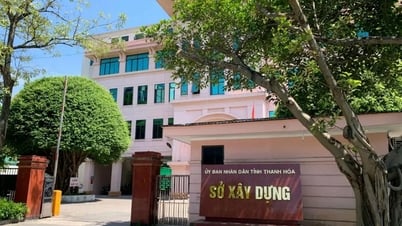








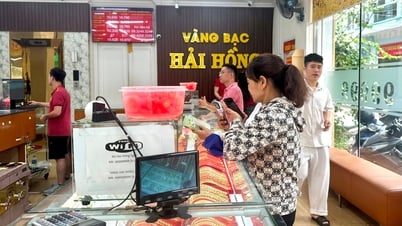
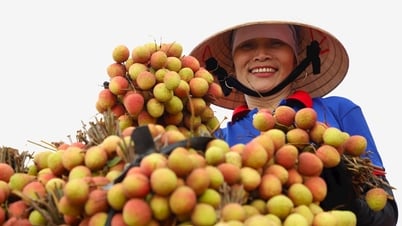

![[Photo] General Secretary To Lam receives Korean Ambassador to Vietnam](https://vphoto.vietnam.vn/thumb/1200x675/vietnam/resource/IMAGE/2025/6/6/a0765b7543784cbcbfe4755b67d43ab4)


![[Photo] President Luong Cuong works with Hung Yen and Thai Binh Provincial Party Committees on implementing Resolution of the 11th Central Conference, 13th tenure](https://vphoto.vietnam.vn/thumb/1200x675/vietnam/resource/IMAGE/2025/6/6/127b735d2761484d81dcee0d7725a25b)































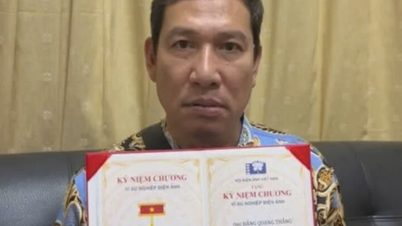





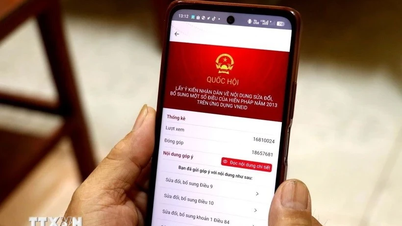



















![[OCOP REVIEW] Tu Duyen Syrup - The essence of herbs from the mountains and forests of Nhu Thanh](https://vphoto.vietnam.vn/thumb/402x226/vietnam/resource/IMAGE/2025/6/5/58ca32fce4ec44039e444fbfae7e75ec)



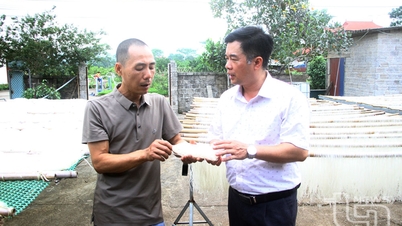





Comment (0)